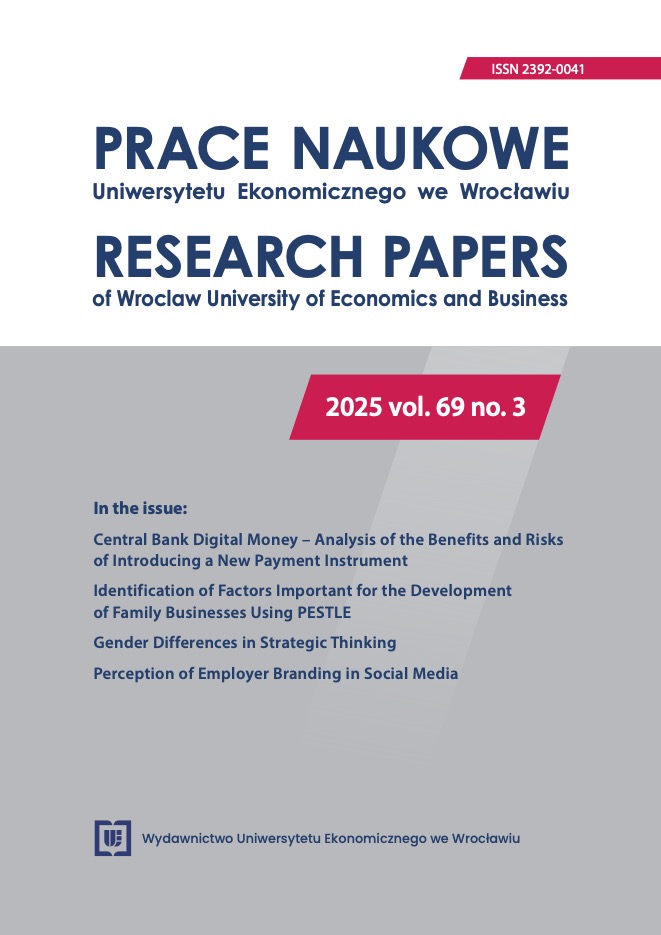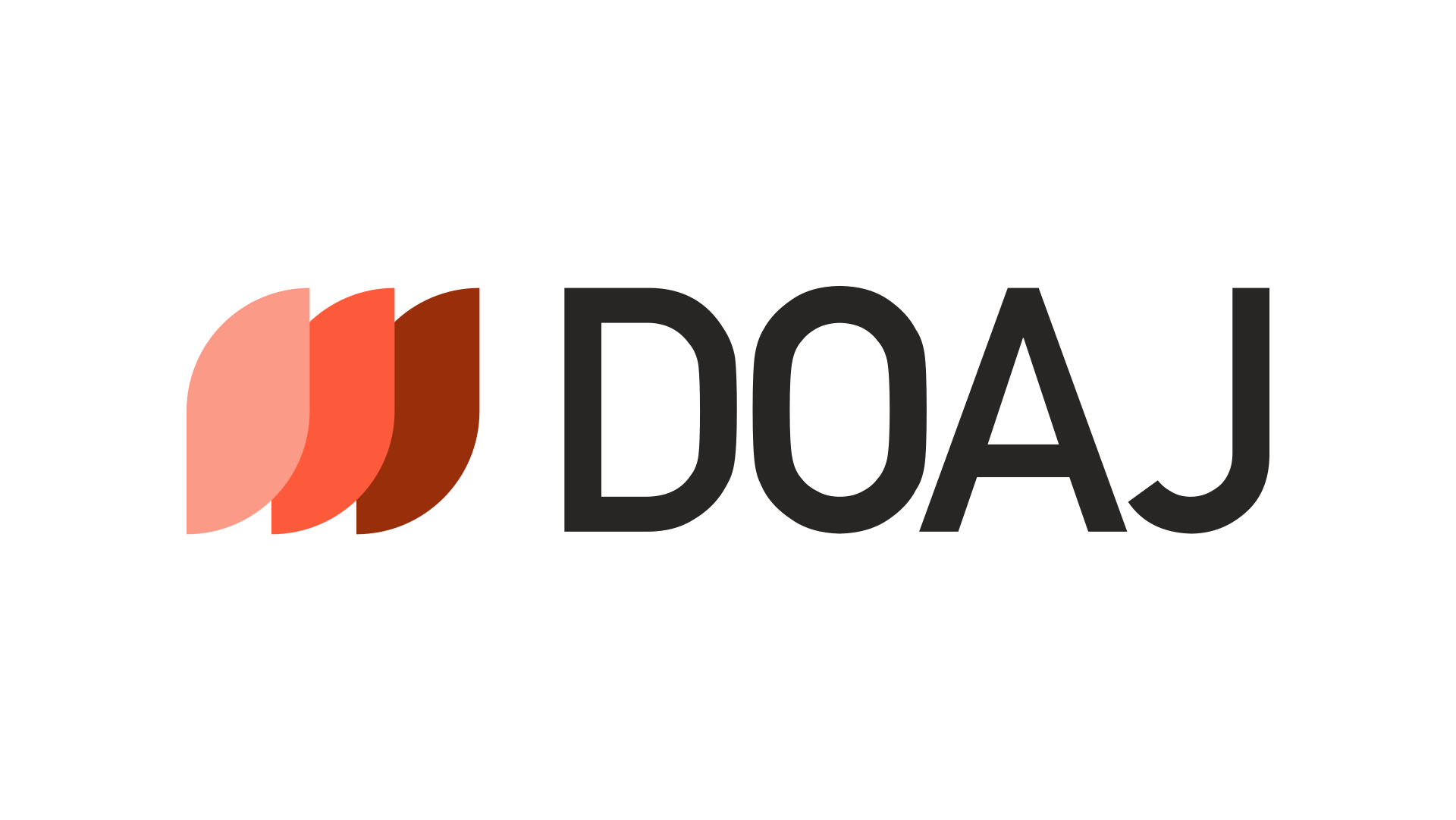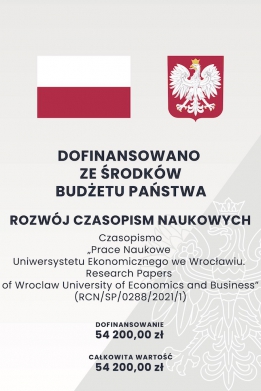Exploring Gender Differences in Strategic Thinking:A Five-Dimensional Profiling Approach
DOI:
https://doi.org/10.15611/pn.2025.3.06Keywords:
strategic thinking, PROFIT (PROperty FITting) analysis, gender differencesAbstract
Aim: To identify gender differences in strategic thinking profiles using an original five-dimensional scale based on: the approach to change, the approach to the competitive environment, the information processing style, the level of participation and the level of flexibility.
Methodology: Data from 184 Polish top managers and company owners were collected using a CAWI technique and analysed through PROFIT (Property Fitting) analysis.
Results: The results reveal distinct strategic thinking profiles: women are more exploratory, relational and intuitive, whilst men are more analytical, competitive, and emergent. Women prefer an individualistic style during strategy formulation and a collective style during implementation, whereas men favour collaborative idea generation but top-down execution.
Implications and recommendations: The findings suggest that gender diversity in top management teams broadens strategic perspectives and increases organisational resilience in diverse environmental conditions. One of the future research directions is to include representatives of different cultures. Another direction in future research is to use PROFIT analysis to identify differences in other variables, such as respondents' age and field of education, to understand the antecedents of strategic thinking.
Originality/value: This study's contribution is to show gender diversity as a key to developing top teams with a broader perspective and more opportunities to build an effective strategy, and to use the PROFIT analysis which is not adequately popularised in management science.
Downloads
References
Arcand, M., & Nantel, J. (2012). Uncovering the Nature of Information Processing of Men and Women Online: A Comparison of Two Models Using the Think-Aloud Method. Journal of Theoretical and Applied Electronic Commerce Research, 7(2), 106-120.
Bajcar, B. (2017). Individual Differences in Strategic Thinking and Behavior Styles. Studia Psychologiczne, 55(1), 1-14. https://doi.org/10.2478/V1067-010-0158-3
Bao, W., Wang, Y., Yu, T., Zhou, J., & Luo, J. (2022). Women Rely on “gut feeling”? The Neural Pattern of Gender Difference in Non-Mathematic Intuition. Personality and Individual Differences, 196, 111720.
Bear, J. B., & Woolley, A. W. (2011). The Role of Gender in Team Collaboration and Performance. Interdisciplinary Science Reviews, 36(2), 146-153.
Benyamini, Y., Leventhal, E., & Leventhal, H. (2000). Gender Differences in Processing Information for Making Self-Assessments of Health. Psychosomatic Medicine, 63(3), 354-364.
Bonesso, S., Gerli, F., & Scapolan, A. (2014). The Individual Side of Ambidexterity: Do Individuals’ Perceptions Match Actual Behaviors in Reconciling the Exploration and Exploitation Trade-Off? European Management Journal, 32(3), 392-405. https://doi.org/10.1016/j.emj.2013.07.003
Bonn, I. (2005). Improving Strategic Thinking: A Multilevel Approach. Leadership and Organization Development Journal, 26(5), 336-354. https://doi.org/10.1108/01437730510607844
Brett, G., & Miles, A. (2021). Who Thinks How? Social Patterns in Reliance on Automatic and Deliberate Cognition. Sociological Science, 8, 96-118.
Casey, A. J., & Goldman, E. F. (2010). Enhancing the Ability to Think Strategically: A Learning Model. Management Learning, 41(2), 167-185. https://doi.org/10.1177/1350507609355497
Cashdan, E. (1998). Are Men More Competitive than Women? British Journal of Social Psychology, 37(2), 213-229.
Chung, J., & Monroe, G. (2001). A Research Note on the Effects of Gender and Task Complexity on an Audit Judgment. Behavioral Research in Accounting, 13, 111-125.
Czakon, W. (2022). Strategic Management and Myopia: Challenges and Implications (1st ed.). Routledge. https://doi.org/10.4324/9781003199151
Deprez, J., Van den Broeck, H., Cools, E., & Bouckenhoooghe, D. (2012). Gender Differences in Commitment to Change: Impacted by Gender? Working Papers of Faculty of Economics and Business Administration. Ghent University, (12/775).
Dhir, S., Dhir, S., & Samanta, P. (2018). Defining and Developing a Scale to Measure Strategic Thinking. Foresight, 20(3), 271-288.
Dixit, S., Singh, S., Dhir, S., & Dhir, S. (2021). Antecedents of Strategic Thinking and Its Impact on Competitive Advantage. Journal of Indian Business Research, 13(4), 437-458. https://doi.org/10.1108/JIBR-08-2020-0262
Díaz-García, C., González-Moreno, A., & Jose Sáez-Martínez, F. (2013). Gender Diversity within R&D Teams: Its Impact on Radicalness of Innovation. Innovation, 15(2), 149-160. https://doi.org/10.5172/impp.2013.15.2.149
Dragoni, L., Oh, I. S., Vankatwyk, P., & Tesluk, P. E. (2011). Developing Executive Leaders: The Relative Contribution of Cognitive Ability, Personality, and the Accumulation of Work Experience in Predicting Strategic Thinking Competency. Personnel Psychology, 64(4), 829-864.
Eisenhardt, K. M. (1990). Speed and Strategic Choice: How Managers Accelerate Decision Making. California Management Review, 32(3), 39-54. https://doi.org/10.2307/41166616
Faizan, R., Nair, S. L. S., & Haque, A. U. (2018). The Effectiveness of Feminine and Masculine Leadership Styles in Relation to Contrasting Gender’s Performances. Polish Journal of Management Studies, 17(1), 78-92.
Filippin, A., & Crosetto, P. (2016). A Reconsideration of Gender Differences in Risk Attitudes. Management Science, 62(11), 3138-3160.
Geier, M. T. (2024). Strategic Thinking: Theoretical Development and Assessment. Journal of Strategy and Management, 17(1), 1-21. https://doi.org/10.1108/JSMA-10-2021-0212
Goldman, E. F. (2007). Strategic Thinking at the Top. MIT Sloan Management Review, 48(4), 75-81.
Goldman, E. F., Schlumpf, K. S., & Scott, A. R. (2017). Combining Practice and Theory to Assess Strategic Thinking. Journal of Strategy and Management, 10(4), 488-504. https://doi.org/10.1108/JSMA-02-2017-0012
Graham, J. F., Stendardi, E. Jr., Myers, J., & Graham, M. (2002). Gender Differences in Investment Strategies: An Information Processing Perspective. The International Journal of Bank Marketing,20(1),17-26.
Hambrick, D. C., & Mason, P. A. (1984). Upper Echelons: The Organization as a Reflection of Its Top Managers. Academy of Management Review, 9, 193-206. https://doi.org/10.2307/258434
Heracleous, L. (1998). Strategic Thinking or Strategic Planning? Long Range Planning, 31(3), 481-487. https://doi.org/10.1016/S0024-6301(98)80015-0
Hitchcock, J. L. (2001). Gender Differences in Risk Perception: Broadening the Contexts. Risk, 12, 179.
Hudgens, G. A., & Fatkin, L. T. (1985). Sex Differences in Risk Taking: Repeated Sessions on a Computer Simulated Task. The Journal of Psychology, 119(3), 197-206.
Hunt, V., Layton, D., & Prince, S. (2015). Diversity Matters. McKinsey & Company, 1(1), 15-29.
Hurst, D. K., Rush, J. C., & White, R. E. (1989). Top Management Teams and Organisational Renewal. Strategic Management Journal, 10(S1), 87-105.
Iriyama, A., Kishore, R., & Talukdar, D. (2016). Playing Dirty or Building Capability? Corruption and HR Training as Competitive Actions to Threats from Informal and Foreign Firm Rivals. Strategic Management Journal, 37(10), 2152-2173. https://doi.org/10.1002/smj.2447
Jammulamadaka, N. (2024). Not Planning but Way-Finding: Critical Strategic Thinking for Southern NGOs. International Journal of Organizational Analysis, 32(3), 405-421.
Jelenc, L., Pisapia, J., & Ivanusic, N. (2016). Demographic Variables Influencing Individual Entrepreneurial Orientation and Strategic Thinking Capability. Journal of Economic and Social Development, 3(1), 3-14.
Johnson, J. E. V., & Powell, P. L. (1994). Decision Making, Risk and Gender: Are Managers Different. British Journal of Management, 5, 123-138.
Kagzi, M., & Patky, J. (2023). Board Diversity and Strategic Orientation: Evidence from India. Journal of Public Affairs, 23(1).
Kesebir, S., Lee, S. Y., Qiu, J., & Pillutla, M. (2020). Same-Sex Peer Norms: Implications for Gender Differences in Negotiation. In: Research Handbook on Gender and Negotiation (pp. 117-131). Edward Elgar Publishing.
Kim, H.‐S., & Shim, S. (2003). Gender‐Based Approach to the Understanding of Leadership Roles Among Retail Managers. Human Resource Development Quarterly, 14(3), 321‐42.
Krawiec, F. (2003). Strategiczne myślenie w firmie. Wydawnictwo Difin.
Lenney, E. (1977). Women’s Self-Confidence in Achievement Settings. Psychological Bulletin, 84, 1-13.
Liedtka, J. M. (1998). Strategic Thinking: Can It Be Taught? Long Range Planning, 31(1), 120-129. https://doi.org/10.1016/S0024-6301(97)00098-8
Lubatkin, M. H., Simsek, Z., Ling, Y., & Veiga, J. F. (2006). Ambidexterity and Performance in Small-to Medium-Sized Firms: The Pivotal Role of Top Management Team Behavioral Integration. Journal of Management, 32(5), 646-672. https://doi.org/10.1177/0149206306290712
Meyer, R. (2007). Mapping the Mind of the Strategist: A Quantitative Methodology for Measuring the Strategic Beliefs of Executives. Erasmus University Rotterdam, Erasmus Research Institute of Management.
Meyers-Levy, J. (1989). Gender Differences in Information Processing: A Selectivity Interpretation. In P. Cafferata, & A. Tybout (Eds.), Cognitive and Affective Responses to Advertising (pp. 219-260). Lexington Press.
Morande, S., Tewari, V., Amini, M., Gul, K., & Kukreja, J. (2024). Unlocking Innovation: Exploring Gendered Differences in Neural Activity During Creative Tasks. In J. Kukreja, S. Saluja, & S. Sharma (Eds.), Neuroleadership Development and Effective Communication in Modern Business (pp. 119-139). IGI Global.
Niederle, M., & Vesterlund, L. (2007). Do Women Shy Away from Competition? Do Men Compete too Much? The Quarterly Journal of Economics, 122(3), 1067-1101.
Oakland, T., Joyce, D., Horton, C., & Glutting, J. (2000). Temperament-Based Learning Styles of Identified Gifted and Nongifted Students. Gifted Child Quarterly, 44(3), 183-189.
Olson, A. K., & Simerson, B. K. (2015). Leading with Strategic Thinking: Four Ways Effective Leaders gain Insight, Drive Change and Get Results. John Wiley and Sons.
Piórkowska, K., Lichtarski, J. M., Mazurek, E., & Witek-Crabb, A. (2022). Myśliciel strategiczny – pomiar cech i profilowanie. Zeszyty Naukowe Uniwersytetu Ekonomicznego w Krakowie, 4(998), 107-128.
Pisapia, J., Pang, N. S. K., Hee, T. F., Lin, Y., & Morris, J. D. (2009). A Comparison of the Use of Strategic Thinking Skills of Aspiring School Leaders in Hong Kong, Malaysia, Shanghai, and the United States: An Exploratory Study. International Education Studies, 2(2), 46-58.
Rhee, Y., & Moon, B. (2025). When Employee Communication Behavior Triggers Organizational Crisis: Strategic Thinking about Internal Crisis Communication (ICC) in Public Relations. In The Routledge Handbook of Employee Communication and Organizational Processes. Routledge. https://doi.org.10.4324/9781003415619-43
Rogelberg, S. G., & Rumery, S. M. (1996). Gender Diversity, Team Decision Quality, Time on Task, and Interpersonal Cohesion. Small Group Research, 27(1), 79-90.
Singh, S., & Sinha, S. (2023). Firm’s Exploration-Exploitation Capabilities. Do Diversity and Empowerment Matter? European Business Review, 35(4), 500-519.
Srivastava, S., & D’Souza, D. (2021). Measuring Strategic Thinking in Organizations. Editorial Policy, 33(1), 90-111.
Szymańska-Migut, K. (2012). Jak pomagać kobietom w awansie na stanowiska zarządcze. MIT Sloan. Management Review Polska. https://mitsmr.pl/zespoly-i-wspolpraca/jak-pomagac-kobietom-w-awansie-na-stanowiska-zarzadcze/
Tungodden, J., & Willén, A. (2023). When Parents Decide: Gender Differences in Competitiveness. Journal of Political Economy, 131(3), 751-801.
Verheul, I., Risseeuw, P., & Bartelse, G. (2002). Gender Differences in Strategy and Human Resource Management: The Case of Dutch Real Estate Brokerage. International Small Business Journal, 20(4), 443-476.
Wąsowska, A. (2014). Myślenie strategiczne w małych i średnich organizacjach (Strategic Thinking in Small and Medium Organizations). Problemy Zarządzania, 12(45), 156-174.
Yalcin, Y., & Kurnaz, H. K. (2021). Evaluation of Cognitive Flexibility and Goal Orientation Levels of Students Preparing for Special Talent Exam. International Education Studies, 14(11), 10-18.
Young, L. (2016). Developing Strategic Thinking. Australian Army Journal, 13(2), 5-22.
Zaborski, A., & Pełka, M. (2013). Geometrical Presentation of Preferences by Using Profit Analysis and R Program. Acta Universitatis Lodziensis, Folia Oeconomia, 285, 191-197.
Downloads
Published
License
Copyright (c) 2025 Janusz M. Lichtarski, Anna Witek-Crabb, Edyta Mazurek, Katarzyna Piórkowska

This work is licensed under a Creative Commons Attribution-ShareAlike 4.0 International License.
Accepted 2025-07-29
Published 2025-10-07









